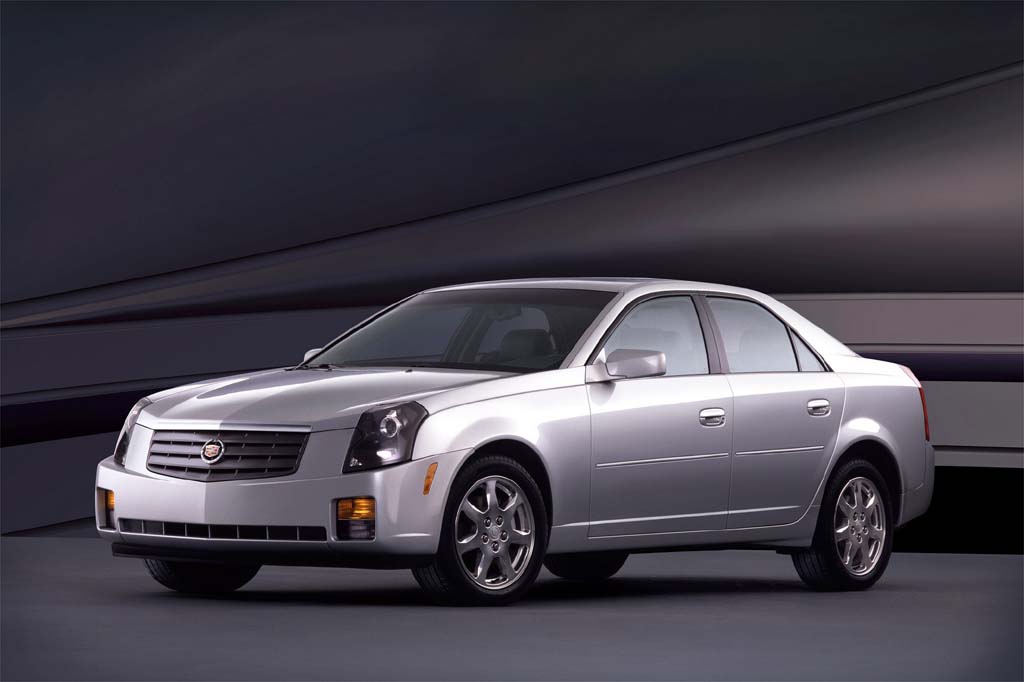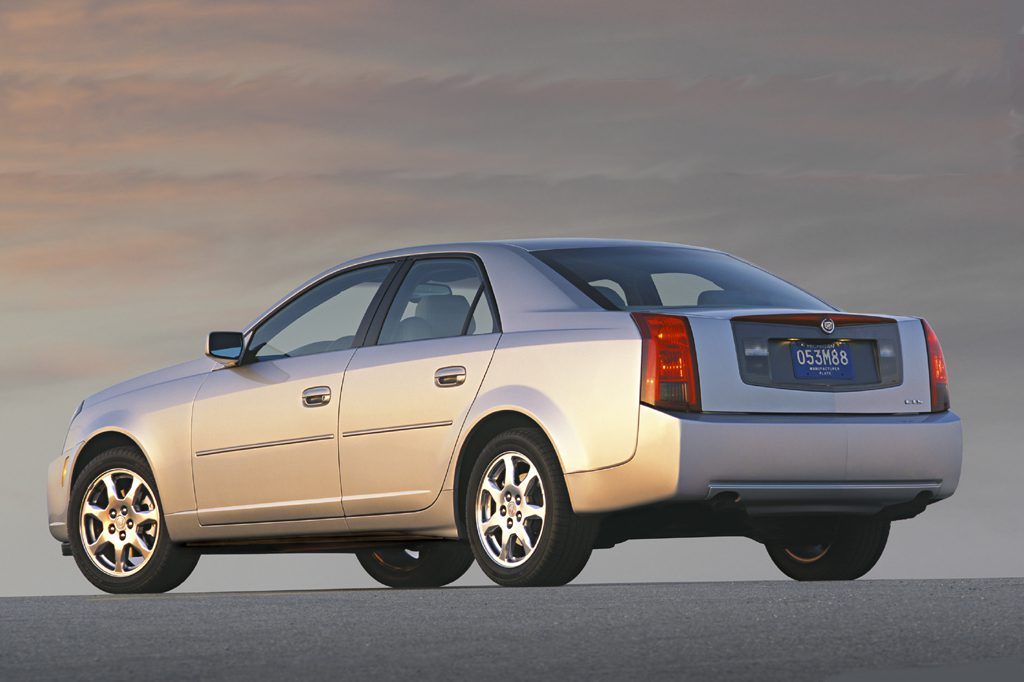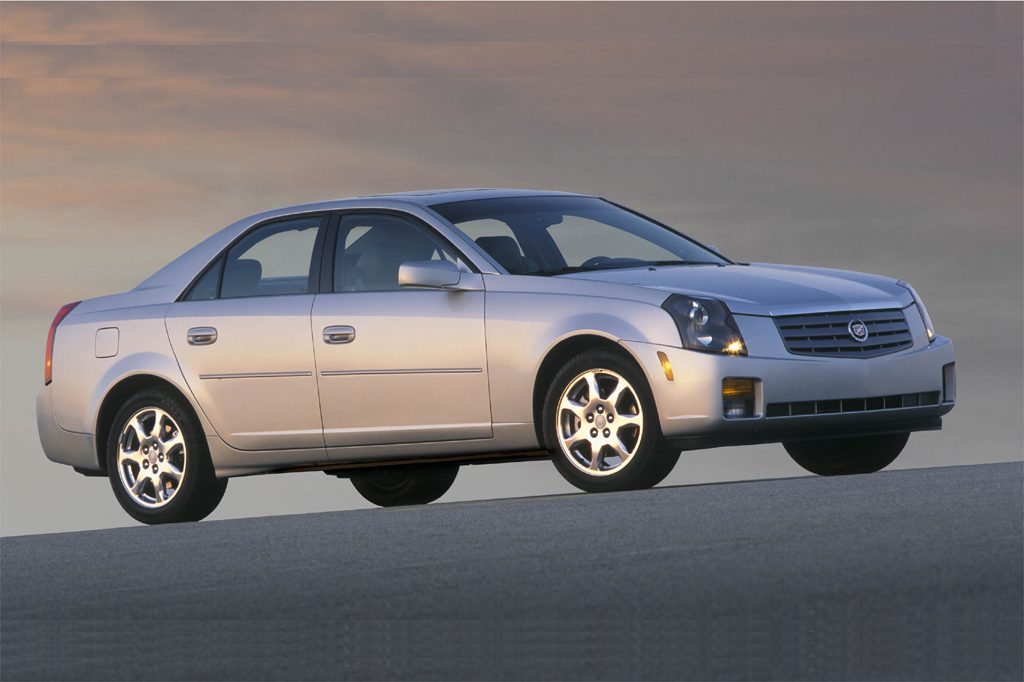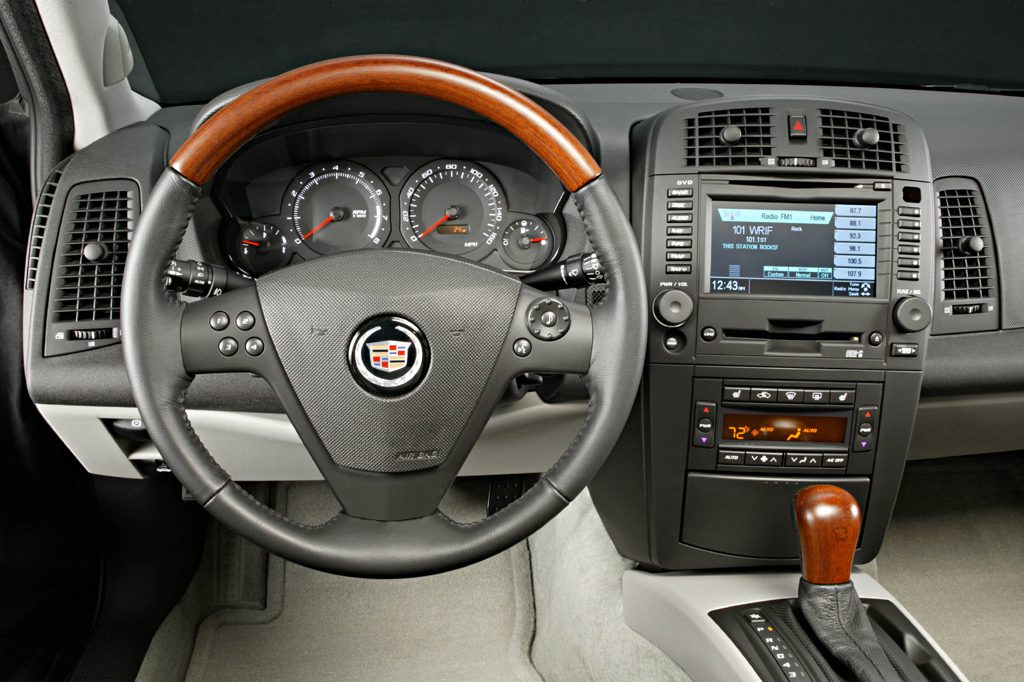| Premium midsize car; Built in USA |
|
|
| Good condition price range: $6,000 – $20,000* |

2003 Cadillac CTS

2004 Cadillac CTS

2005 Cadillac CTS

Cadillac CTS interior
| Pros: |
|
| Cons: |
|
Bold styling may polarize opinions, but this solid, sporty sedan is rewarding to drive, especially with the 3.6-liter V6. That powertrain provides the response and refinement expected in a premium midsize sedan, and qualifies the CTS as a Best Buy in its class. Not everyone needs its power, but the rapid-rolling CTS-V costs much less than most V8 import rivals.
Overview
Built in America, this new hard-edged sedan replaced the German-sourced Catera as the entry-level Cadillac for 2003. Although the CTS competed against such near-luxury mainstays as the BMW 3-Series and Mercedes-Benz C-Class, it ranked among the largest, heaviest cars in that class. Additional rivals includes the Acura TL and Infiniti G35.
Equipped with rear-wheel drive and a 3.2-liter V6 engine, the CTS came with a five-speed manual transmission or a five-speed automatic. The five-speed automatic was Cadillac’s first–the same one that GM supplied for BMW’s 3- and 5-Series cars. It had Sport and Winter modes, but no manual shift gate (as in the BMWs).
Standard on CTS were antilock four-wheel disc brakes, traction control, front side and curtain side airbags, leather upholstery, and GM’s OnStar assistance system. An antiskid system was part of a Luxury Sport Package option, which also contained 17-inch wheels versus 16s, and a sport-oriented suspension, steering, and brake calibrations.
Other options included a navigation system with dashboard screen, and related voice activation for navigation and audio functions.
A sunroof, in-dash CD changer, and xenon headlamps could also be installed as extra-cost items. The optional satellite radio offered local programming plus 100 exclusive channels for a monthly fee.
Yearly Updates
| 2004 CTS A new, larger V6 engine choice and a revised suspension highlighted 2004 changes to Cadillac’s entry-level model, which was positioned as a sporty near-luxury sedan. The new engine was a 255-horsepower, 3.6-liter V6, available only with a five-speed automatic transmission. It joined a 220-horsepower, 3.2-liter V6 that was now available only with manual shift. Cadillac said CTS’s suspension revisions were designed to smooth the ride. Available with either engine was a Sport Package that included 17-inch wheels, an antiskid system, speed-variable steering assist, upgraded brakes, and a rear load-leveling suspension. Midyear brought a high-performance CTS-V model with a V8 borrowed from the Chevrolet Corvette. |
| 2005 CTS Cadillac introduced a new 2.8-liter V6 for 2005, developing 210 horsepower and slotted below the 3.6-liter. At the other end of the spectrum, heavy-footed fans could choose the CTS-V with its 400-horsepower, 5.7-liter V8 and six-speed manual gearbox. A six-speed manual transmission was standard for either V6, with the five-speed automatic an option. Leather upholstery was optional for the CTS 2.8 and standard on 3.6 and CTS-V models. Xenon headlamps and an antiskid system were standard on the CTS-V and optional for V6 versions. Cadillac’s CTS-V featured unique exterior and interior touches, a sport suspension, and 18-inch run-flat tires. Satellite radio and a sunroof could be installed on all models. |
| 2006 CTS Cadillac’s smallest sedan gets revised sport and performance packages for 2006. For ’06, the available Sport Package adds to V6s a limited-slip differential, antiskid system, xenon headlights, sport suspension, and 17-inch wheels vs. 16s. The revised Wheel Performance Package adds to the 3.6 model speed-variable steering assist, uprated brakes, sport suspension, load-leveling suspension, and 18-inch wheels. Added during the model year, the Wheel Sport Appearance Package gives the 3.6 CTS-V-style trim elements. |
| 2007 CTS Cadillac’s smallest car marks time for 2007, pending a 2008 redesign due in calendar ’07. |
